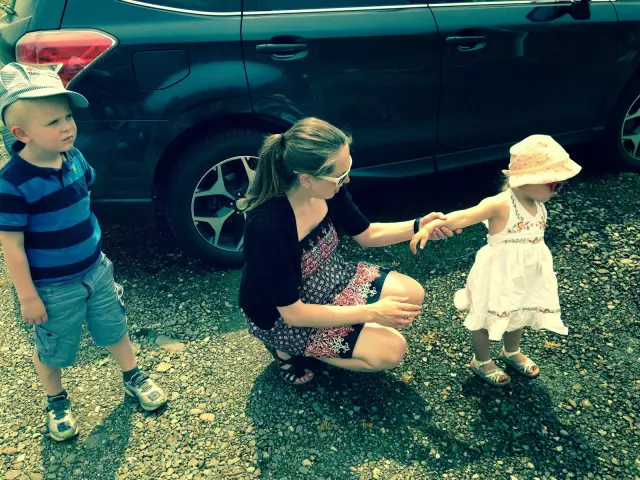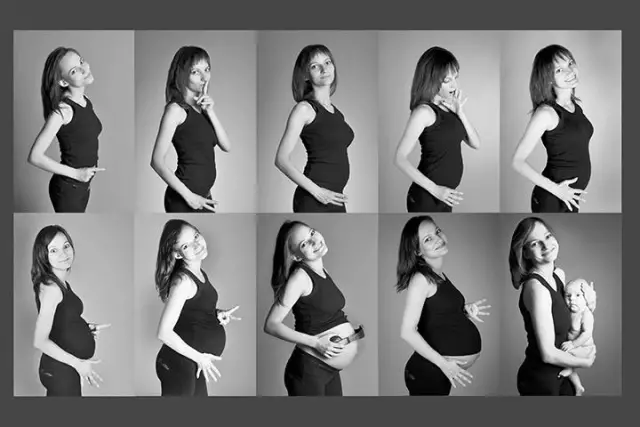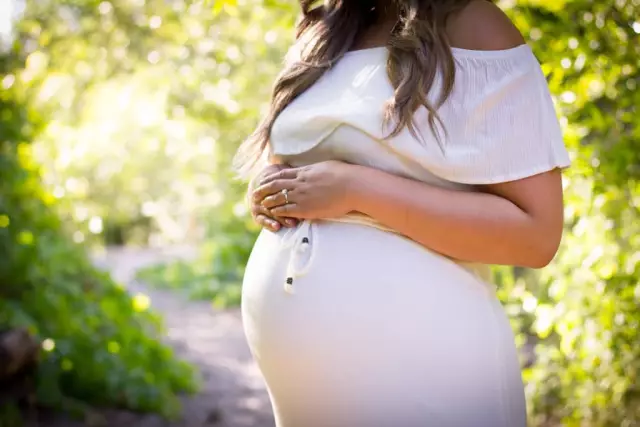- Author Rachel Wainwright [email protected].
- Public 2023-12-15 07:39.
- Last modified 2025-11-02 20:14.
42 weeks pregnant

At 42 weeks of gestation, 40 full weeks have passed since the time of fertilization of the egg. By all standards, the normal duration of pregnancy is 37 to 42 weeks. If its term exceeds 42 weeks, then they speak of postmaturity.
Changes in the fetus at 42 weeks of gestation
At 42 weeks gestation, all fetal organs are ripe for full-fledged work outside the womb. At this time, the child is already quite large, his height ranges from 52 to 54 cm, weight from 3600 g and more.
If by the end of 42 weeks of pregnancy there is no delivery, then there may be signs of postmaturity.
The skin of the baby's body after birth becomes as if parchment, dry and hard to the touch, with many cracks and folds. In places of folds near joints, traces of blood sometimes appear from cracks as a result of friction. The skin has long ago lost the damp lubricant that had a protective function, therefore it is very sensitive to any damage.
The tips of the nails on the hands of such children are longer than the nail bed, they protrude beyond the edge of the phalanx. The bones of the fetal skull at 42 weeks of gestation are quite dense, and the head is less configured during the passage of the birth canal, which complicates childbirth. The large fontanelle can be reduced and the small fontanelle closed completely.
A sufficient amount of adipose tissue has accumulated in the body of the fetus, so the shape of the baby is round at birth.
The brain continues to improve, closer connections are formed between the neurons of its cortex. At 42 weeks of gestation, the oxygen entering the mother's placenta is barely enough to meet the needs of the brain for it.
Changes in a woman's body at 42 weeks of gestation
Due to a decrease in the amount of amniotic fluid and the lowering of the presenting part, the pregnant woman's belly has become smaller in size. The woman determines its activity by the movements of the baby in the womb. Perturbations should be noted regularly, they became more intense in strength, but with a frequency somewhat less often than before.
In a pregnant woman, by this time, the breast significantly increases and becomes heavier, the areoles of the nipples acquire a darker color. The first drops of colostrum periodically appear from the nipples.
Swelling on the legs in the evenings now bother almost all pregnant women, they normally pass by morning. At 42 weeks of gestation, women often experience pain in the lower back, legs, and sometimes in the area of the pubic symphysis.
Tactics in case of a threat of prolongation of pregnancy

It is difficult to single out absolutely reliable criteria that the pregnancy is postponed. This is often talked about if it lasts 43 or more weeks, and as a result, a fetus is born with signs of postmaturity.
It happens that the pregnancy is simply prolonged, without fetal postponement. This occurs if a woman's menstrual cycle before childbirth was 30 or more days, if from generation to generation in a family children are born at a later date, or during pregnancy the baby is not mature enough and has gained weight, and now it is catching up. If the cervix looks immature at 40 weeks, it is likely that labor will be delayed.
A doctor who observed a woman during pregnancy decides on further tactics of behavior - what to do at 42 weeks of gestation. It proceeds from indicators of the fetus's well-being and the presence of a threat to its health. Signs of postmaturity according to ultrasound are thinning and pronounced signs of aging of the placenta, the presence of meconium particles in the amniotic fluid and the absence of vernix flakes in them.
If there is no delivery at 42 weeks of gestation, then their approach is accelerated by drugs, and in some cases, prompt delivery (caesarean section) will be required. Stimulation of natural childbirth is caused by hormonal means, only before that it is important to prepare the cervix for opening.
An emergency cesarean section is done if the fetus has developed acute hypoxia, for example, with placental abruption, loss of umbilical cord loops or ingestion of amniotic fluid or meconium into the respiratory tract.
YouTube video related to the article:
Found a mistake in the text? Select it and press Ctrl + Enter.






